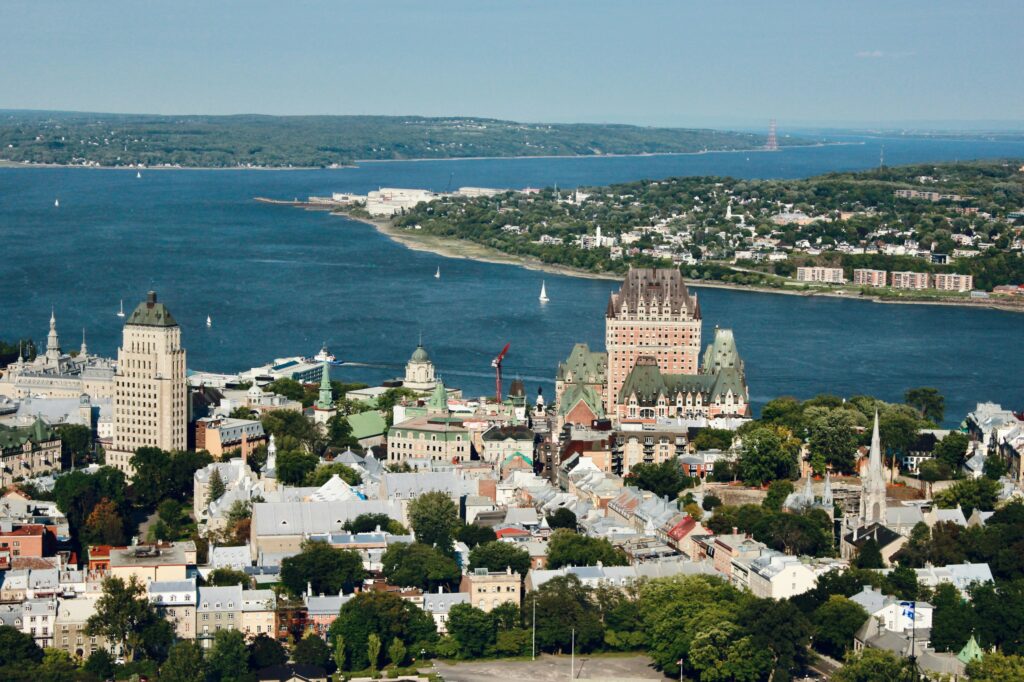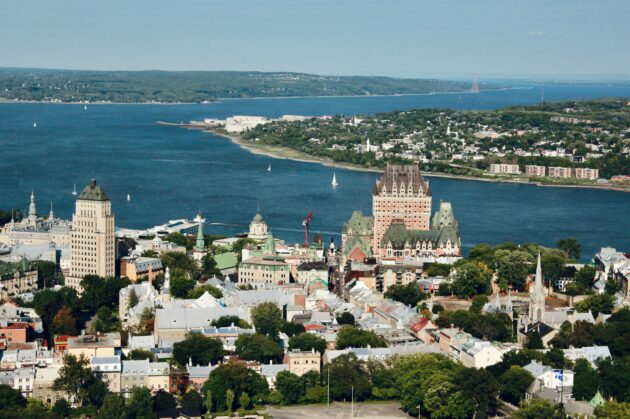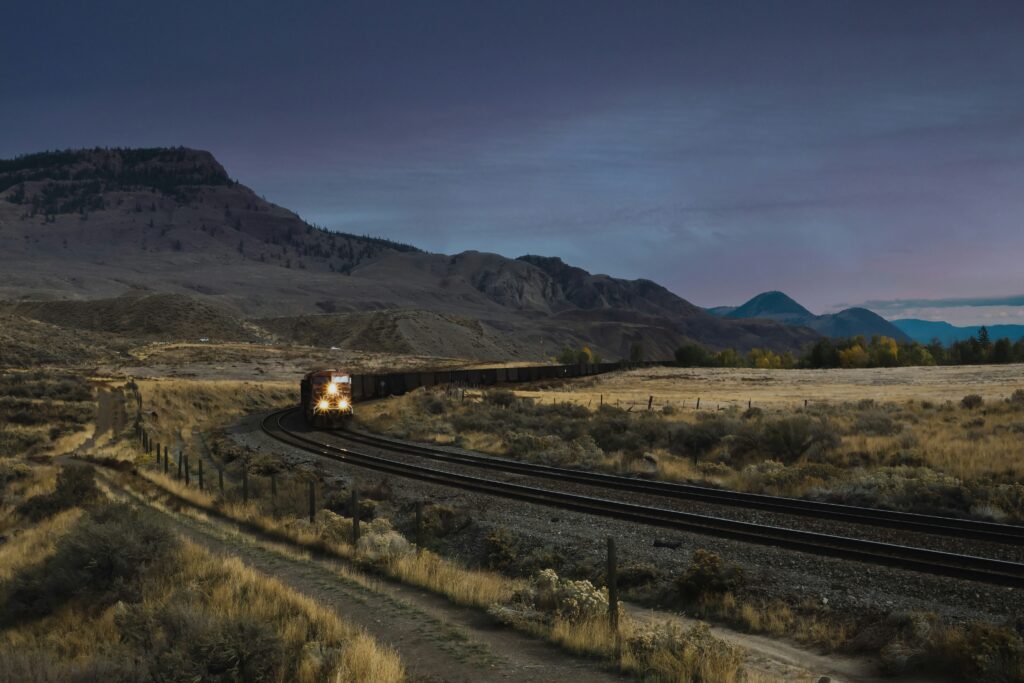Where old stone meets modern rhythm, and every street corner feels like a story waiting to happen.
Some places leave a mark not because they overwhelm you with sights, but because they quietly win you over—one cobbled street, one flaky croissant, one friendly conversation at a market stall at a time. Quebec and Montreal are two such places. Nestled in Canada’s French-speaking province, these cities carry themselves with a gentle kind of confidence, rich in character and alive with contrast.
This is a part of the world where history whispers from old stone walls, where street art adds colour to classic facades, and where life isn’t hurried—it’s savoured. The perfect mix of timeless charm and creative energy, Quebec City and Montreal feel like two chapters of the same beautiful story.
Table of Contents
Travelling Slow: The Joy of the Journey
If you really want to get a feel for Canada, slow it down. Let the journey be part of the experience. There’s something magical about watching the countryside roll past your window, especially when you’re aboard the Canadian train—an iconic rail line that stretches across the entire country from Toronto to Vancouver. Even if your trip focuses on Quebec, it’s worth knowing just how deeply rail travel is woven into Canada’s sense of space and adventure.
There’s something romantic about trains here. They give you time to breathe, to watch, to think. In a world that’s always rushing, Canada reminds you that sometimes the best moments happen when you pause.
Quebec City: Like Stepping into a Painting
Quebec City doesn’t try to charm you. It doesn’t need to. From the moment you catch sight of the Château Frontenac perched high above the St. Lawrence River, you feel like you’ve stepped into a fairytale. But this isn’t a city frozen in time—it’s alive, and it wants you to experience it fully.
Wander the narrow, winding streets of Old Quebec and you’ll pass ivy-covered walls, iron balconies, and shopfronts that look plucked from 18th-century France. Musicians busk on quiet corners. The scent of crepes and roasting coffee drifts from cafés. It’s all incredibly atmospheric, but never in a way that feels staged. This is just how life unfolds here.
Getting from one city to the other is effortless thanks to the train from Quebec City to Montreal. It’s a scenic, comfortable ride that offers just enough time to reflect on where you’ve been—and get excited about what’s coming next.
As the train rolls through forests and farmland, you’ll catch glimpses of sleepy towns and wide-open skies. It’s not flashy, but it’s beautiful in that quietly powerful way that stays with you.
Montreal: Buzz, Culture, and Heart
Then, almost suddenly, you arrive in Montreal—and the vibe shifts. The pace quickens, the streets widen, and there’s a buzz in the air. If Quebec City is like a handwritten letter, Montreal is a mural—vivid, layered, and always changing.
It’s a city of contrasts, where centuries-old basilicas stand just a few blocks from trendy cafés with neon signs and indoor trees. In one moment, you’re admiring the gothic detail of Notre-Dame Basilica; the next, you’re sitting in a converted warehouse eating freshly baked bagels straight from the oven.
Each neighbourhood has its own flavour. Old Montreal feels timeless, with its cobblestones and lantern-lit streets. The Plateau is artsy and eclectic—think painted staircases, vintage bookstores, and afternoon wine on sun-drenched terraces. Then there’s Mile End, where everything from poetry readings to indie gigs might break out unannounced.
But for all its creativity and energy, Montreal is never cold or distant. People chat in queues, share tables, laugh loudly over coffee. You get the sense that life is lived fully here.
Language, Flavour, and Feeling at Home
What makes both cities especially unique is their language and heritage. French isn’t just spoken—it’s lived. Menus, street signs, conversations on the metro—it all happens in French, but there’s warmth in the way locals switch to English with a smile if you need it. There’s no pretence here, just pride. And that’s something you feel everywhere.
It comes through in the food, too. Quebec cuisine is hearty, comforting, and often just a little indulgent. Try tourtière, a savoury meat pie that tastes like winter evenings by the fire. Or poutine—fries smothered in cheese curds and gravy—that somehow tastes even better at 1 a.m.
Montreal, meanwhile, is a foodie’s playground. From high-end fusion to local delis with queues out the door, the city offers flavours that surprise and satisfy in equal measure. It’s the kind of place where dinner might stretch into hours and dessert is never optional.
A Place for Every Season
There’s no bad time to visit this part of Canada. In autumn, the trees light up in amber and crimson. In winter, the cities sparkle—fairy lights, snow-dusted rooftops, hot chocolate in mittened hands. Spring brings maple syrup season and sugar shacks in the countryside, while summer sees festivals, picnics, and outdoor concerts almost daily.
Montreal especially comes alive in summer. The streets fill with music. People spill onto patios. The whole city feels like it’s waking up after a long nap. Quebec City, too, leans into every season with charm—from toboggan runs in January to outdoor art installations in July.
Wherever you go, there’s a sense that the locals don’t just endure the seasons—they celebrate them.
Two Cities, One Soul
It’s easy to compare Quebec City and Montreal. One is old-world, storybook beautiful. The other, fast-paced and full of edge. But they’re not opposites. They’re more like siblings—different personalities, same roots. And when you visit both, you get a more complete picture of what makes Quebec so special.
Travelling between them by train ties the journey together perfectly. It adds that extra breath between experiences—a time to reflect, to savour, to look forward.
Final Thoughts
Some trips fade the moment you return home. Others linger.
Quebec and Montreal linger.
Not because they demand your attention, but because they earn it—through quiet moments, soft conversations, golden streetlight on a snowy night, or the first crunch of a pastry still warm from the oven.
These aren’t just cities to visit. They’re cities to feel. And long after you’ve left, you’ll find yourself remembering them—not as destinations, but as chapters in a story you were lucky enough to step into.


